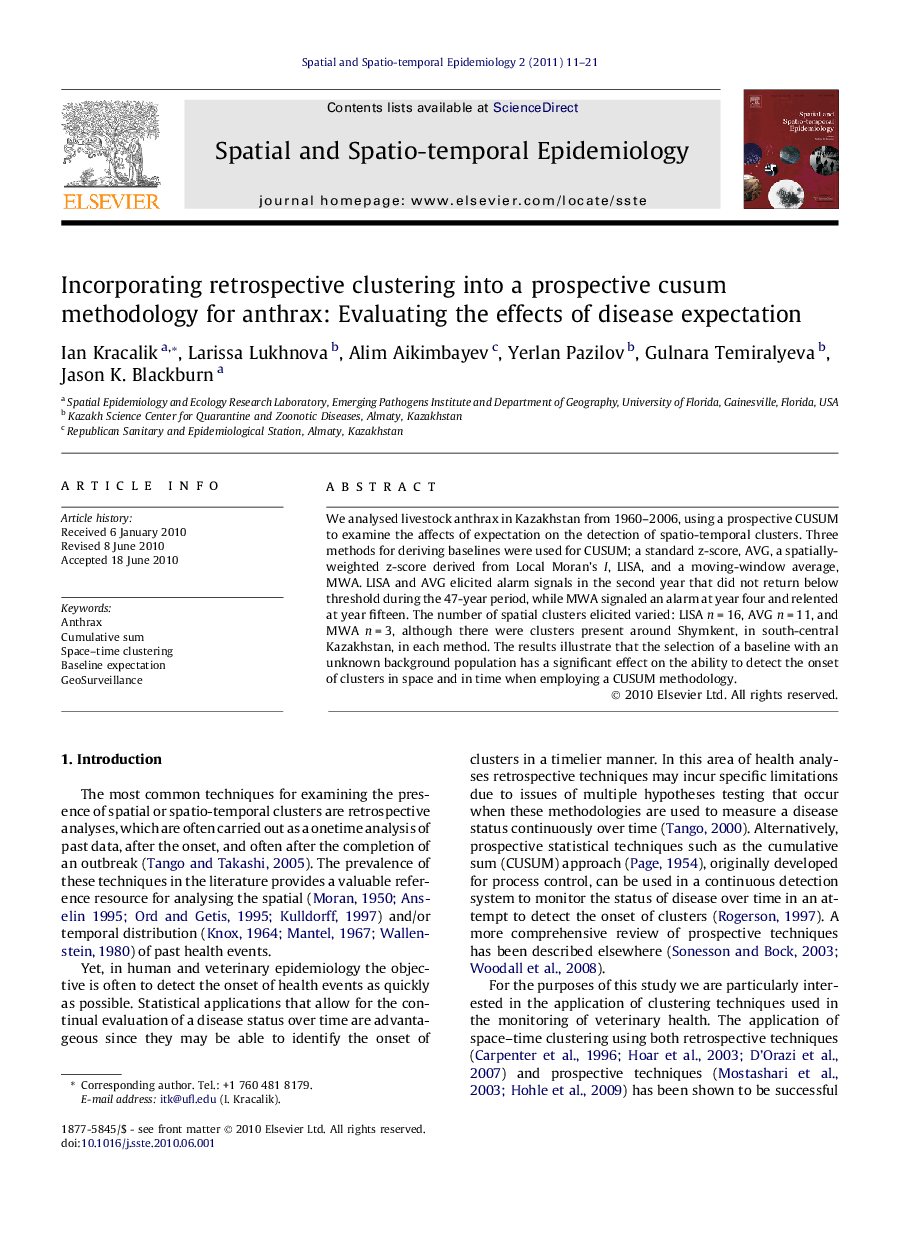| Article ID | Journal | Published Year | Pages | File Type |
|---|---|---|---|---|
| 1064400 | Spatial and Spatio-temporal Epidemiology | 2011 | 11 Pages |
We analysed livestock anthrax in Kazakhstan from 1960–2006, using a prospective CUSUM to examine the affects of expectation on the detection of spatio-temporal clusters. Three methods for deriving baselines were used for CUSUM; a standard z-score, AVG, a spatially-weighted z-score derived from Local Moran’s I, LISA, and a moving-window average, MWA. LISA and AVG elicited alarm signals in the second year that did not return below threshold during the 47-year period, while MWA signaled an alarm at year four and relented at year fifteen. The number of spatial clusters elicited varied: LISA n = 16, AVG n = 11, and MWA n = 3, although there were clusters present around Shymkent, in south-central Kazakhstan, in each method. The results illustrate that the selection of a baseline with an unknown background population has a significant effect on the ability to detect the onset of clusters in space and in time when employing a CUSUM methodology.
